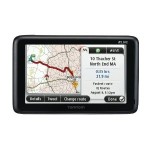10 Best GPS Navigation Systems
A portable GPS navigation system provides you with route guidance to your destination as well as local points of interest. Although smart phones and apps are becoming more popular, stand-alone portable navigation devices are still useful and have more features than ever before such as audible driving directions, verbal commands, real-time traffic with re-routing, and internet connectivity for points of interest.
Some of the criteria we used to rate these personal navigation devices included ease of use, navigation/routing, display, user ratings, and price. Below is our top 10 best GPS navigation systems reviewed.
For additional information see our GPS Buying Guide.
8.8
Garmin Nuvi 3490LMT GPS receiver
We highly recommend this model for all users at a price tag of around $250.
8.7
Garmin Nuvi 3590LMT
Unless you really want that 5 inch display, we recommend the Nuvi 3490LMT, since this model will cost you about $350.
8.4
Garmin Nuvi 2555LMT
On the downside it does not have Bluetooth connectivity or voice commands, and the traffic is ad supported.
This unit is a really good value with a pricetag of about $175.
8.3
Garmin Nuvi 50LM
We recommend this model for anyone who just needs a cheap GPS with navigation instructions and without all the bells and whistles. It costs about $125. (Note at time of publication, Garmin just released a new version of this model called the Nuvi 52LM.)
8.3
Garmin Nuvi 2455LMT
8.1
TomTom GO Live 2535M
Some people have complained that the Live features don’t work all that well, plus you have to subscribe to it after the initial trial period. It is also expensive at around $295.
7.8
TomTom GO 2435TM
7.7
Magellan RoadMate 5175T-LM
7.6
TomTom GO Live 1535M
It is available for less than $160.
7.4
TomTom Via 1535TM
GPS Buying Guide
Here are some important factors to consider when shopping for a GPS navigation system:
- Screen size
- Navigation Instructions
- Lifetime Maps
- Points of Interest (POI)
- Traffic Reports
- Routing Options
- Predictive Data Entry and Dynamic Search
- Lane Assistance
- Ease of Use
- Mounts
- Bluetooth Compatibility
Most systems have screens ranging from 3.5 to 7 inches. The smaller models can be difficult to see when driving and have small buttons which can be a pain to use. On the other hand, the largest units when mounted to the windshield can block your view of the road. The 4.3-inch wide screens seem to be the sweet spot in between too small and too large. The larger 5-inch screens are becoming increasingly popular since they are easier to see and work well in bigger vehicles where the windshield is farther away.
Look for a GPS that tells you to turn onto a street or highway by its name rather than just saying “”left turn ahead”” or similar general direction. Also called text-to-speech, this features helps you focus on driving, especially in busy and unfamiliar areas, instead of looking down at the navigation unit.
All units come preloaded with maps. As roads change or maps improve you will want to update your model with the latest map available. If you don’t get a GPS system that comes with lifetime updates, you will have to pay for each individual update. In the long run this will cost more than just getting a unit that comes with lifetime map updates.
In addition to maps, GPS units come with a preloaded database with points of interest like restaurants, gas stations, and stores to name a few. Some devices can search the web for POI if connected. The POI will vary from model to model so closely examine each models particulars in this area if it is important to you.
Some models come with real-time traffic information that can alert you to a problem or slowdown ahead in time to avoid it. Some will even ask if you want to find another route and will detour you at the touch of a button. The real-time data is available to subscribers through a cell-phone network, FM signal, or satellite radio service. Many units have subscriber based traffic, while others offer free traffic information which is supported by banner ads that pop up on your screen.
Many navigation systems offer different routing options including fastest time, shortest distance, avoid freeways, avoid toll roads, and even most fuel efficient route.
With these features you can enter an address or city name faster. As you type, the predictive data entry will highlight the letters on the screen’s keyboard that will help complete a known name or place. The dynamic search will bring up a list of choices that complete the part of the text you have entered.
This feature tells you the appropriate lane for the driver to travel in order to execute their upcoming maneuver.
There are a variety of features that the newest GPS units have built in to make it easier to use and interact with them. Voice recognition means you can give the device spoken commands, leaving your hands free for driving. Some models also offer pinch and zoom controls like what you would commonly find on smart phones. Another handy feature is 3D view which lets you see any buildings, mountains or other landmarks in 3D.
Most portable systems mount to the windshield using a large suction cup. We recommend an angled rigid arm to attach the unit to the suction cup.
Note that some states have laws which restrict the placement of devices to the windshield.
If you have a Bluetooth compatible phone, this allows you to make and receive telephone calls using the GPS system, and it automatically quiets directions while the call is being made.













